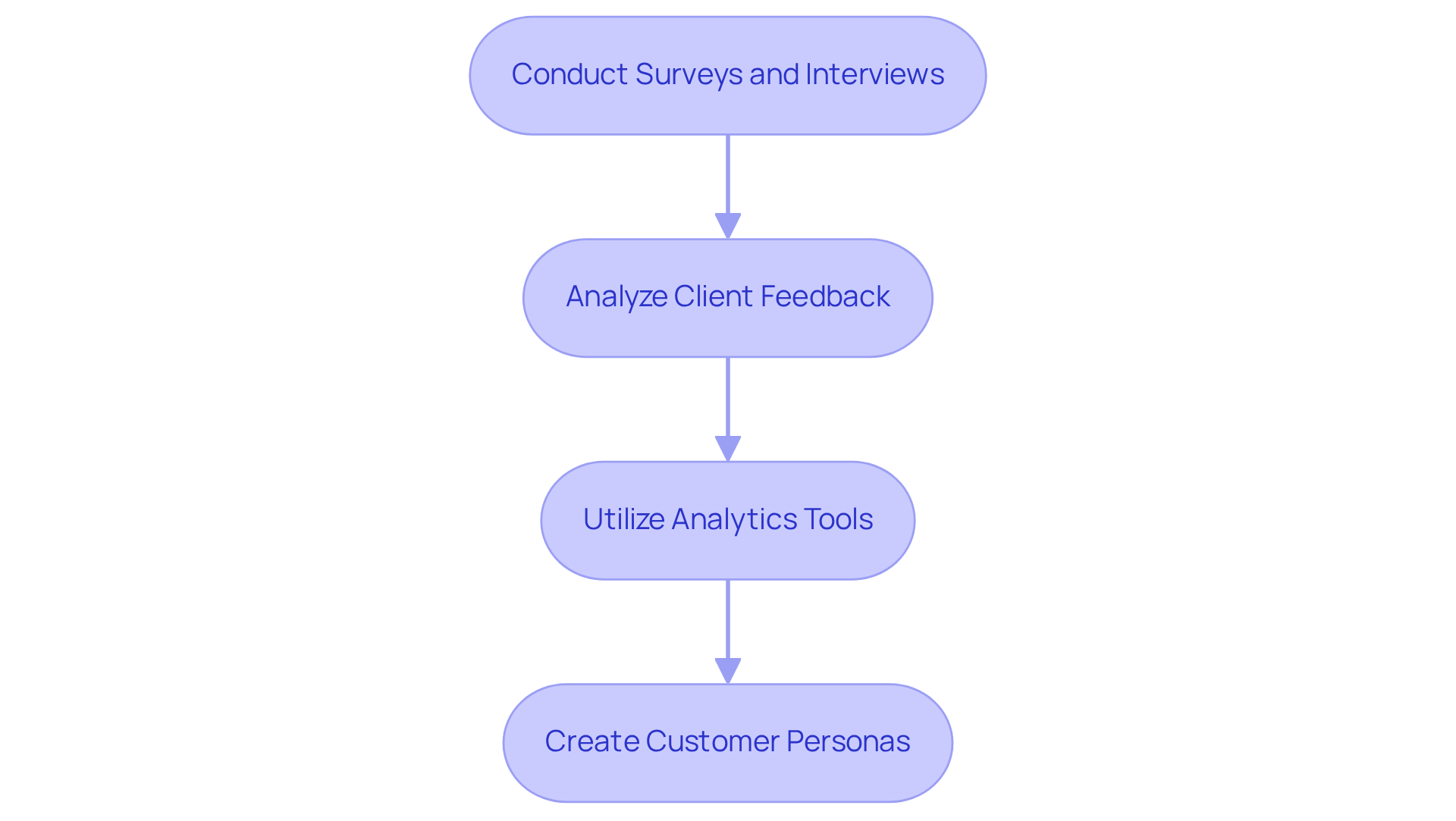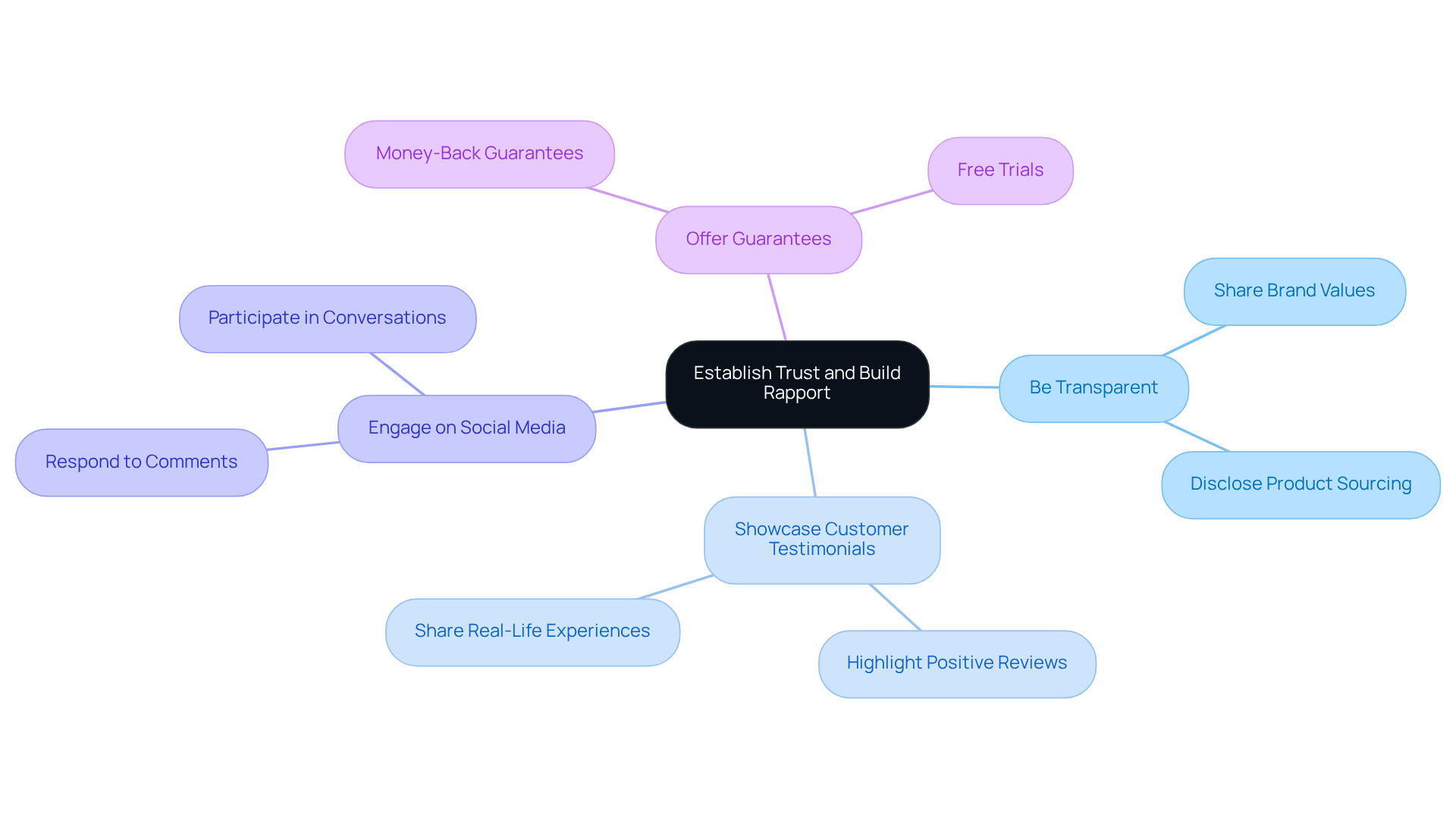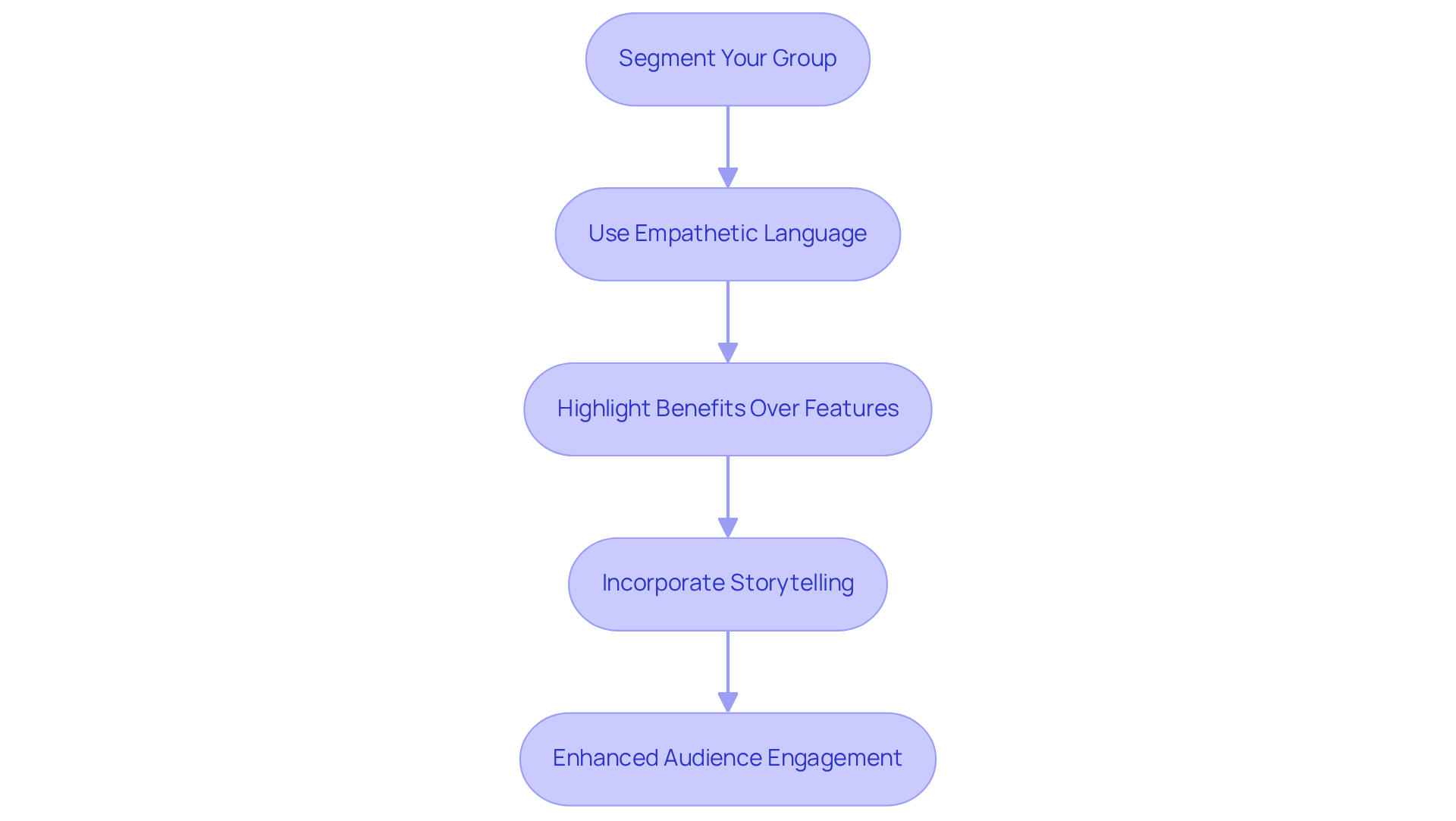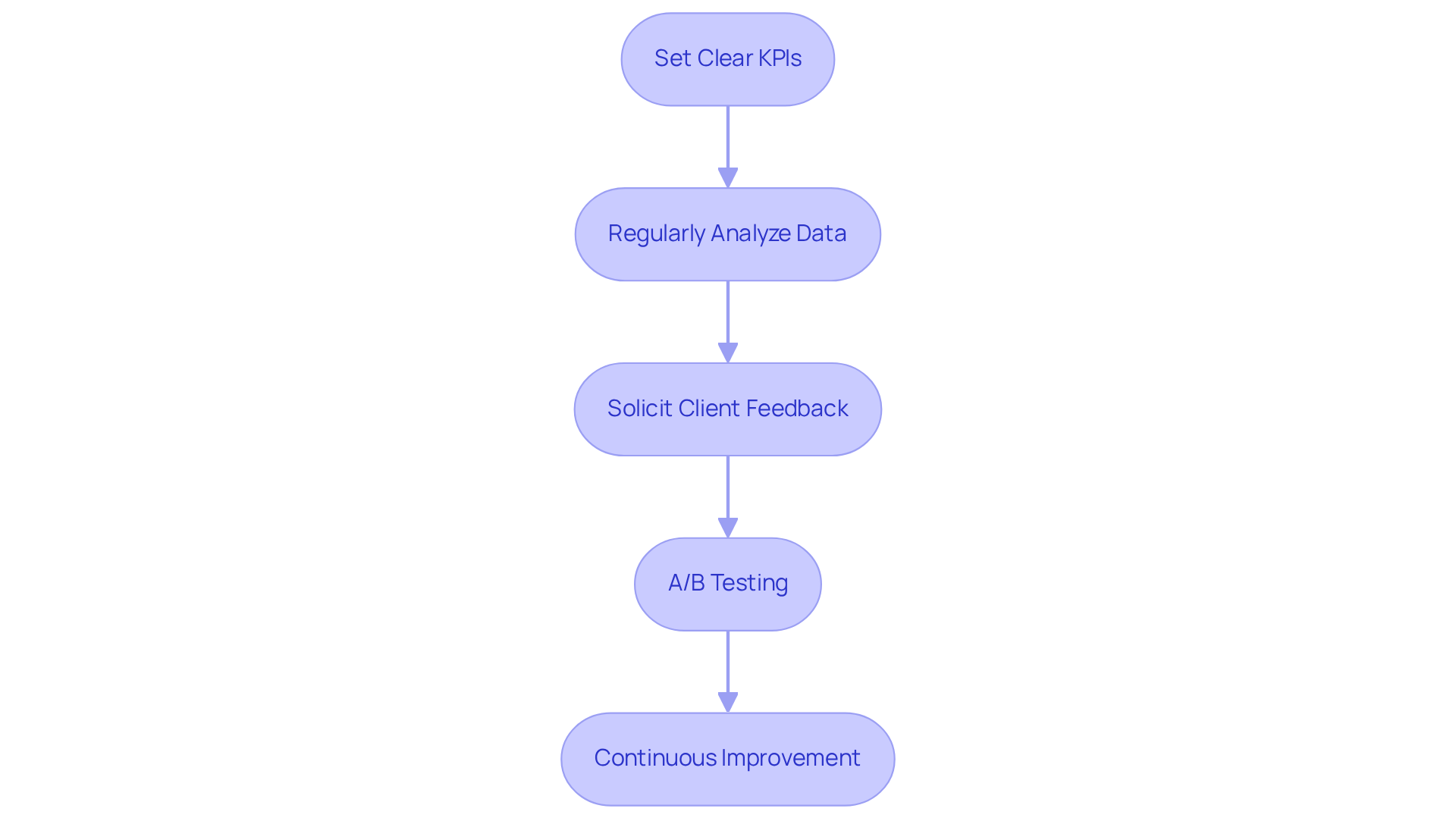
Overview
To effectively convince, DTC brand owners must prioritize a deep understanding of their audience's needs and pain points. This foundational knowledge establishes trust, which is crucial for crafting tailored messaging. Furthermore, leveraging data for continuous improvement is essential. Engaging with clients transparently and customizing communication fosters meaningful connections. Such strategies not only enhance conversion rates but also promote sustainable growth, reinforcing the brand's commitment to its audience.
Introduction
Understanding the dynamics of consumer behavior is essential for direct-to-consumer (DTC) brands seeking to excel in a competitive marketplace. By accurately identifying audience needs and pain points, brand owners can effectively tailor their messaging, thereby fostering enduring relationships with customers. Yet, a significant challenge persists: how can brands not only capture attention but also cultivate trust and drive conversions? This article explores actionable strategies that DTC brand owners can implement to persuade their audience and achieve sustainable growth.
Identify Your Audience's Needs and Pain Points
To effectively identify your audience's needs and pain points, follow these essential steps:
-
Conduct Surveys and Interviews: Engage with your current clients and potential leads through surveys or one-on-one interviews. Pose open-ended questions to reveal their challenges and what they value in a product. This approach aligns with Parah Group's commitment to prioritizing profitability and sustainable growth by understanding client insights.
-
Analyze Client Feedback: Scrutinize client feedback across various platforms, including social media, product reviews, and service interactions. Identify recurring themes that highlight common frustrations or desires. This analysis is vital for developing strategies that enhance conversion rates and profitability.
-
Utilize Analytics Tools: Harness analytics tools to monitor user behavior on your website. Identify which pages exhibit high bounce rates or low engagement, as these can indicate areas where user needs are not being met. Parah Group underscores the importance of rigorous testing and data-driven decisions to optimize these areas efficiently.
-
Create Customer Personas: Construct detailed customer personas based on your findings. Include demographics, preferences, pain points, and buying behaviors to effectively guide your marketing strategies. By thoroughly understanding your audience, you can craft messages that resonate with them, thereby enhancing the likelihood of success and demonstrating how to convince someone to promote sustainable growth.
By comprehensively understanding your target group, you can create messages that address their needs directly, showing how to convince someone to convert.

Establish Trust and Build Rapport
To establish trust and build rapport with your audience, consider the following strategies:
-
Be Transparent: Sharing information about your brand, including your values, mission, and the sourcing of your products, is essential. Transparency fosters trust and demonstrates that you have nothing to hide.
-
Showcase Customer Testimonials: Highlighting positive reviews and testimonials from satisfied customers is crucial. Real-life experiences significantly influence potential buyers' perceptions of your brand.
-
Engage on Social Media: Actively interacting with your followers on social media platforms is vital. Respond to comments, answer questions, and participate in conversations to show that you value their input.
-
Offer Guarantees: Providing money-back guarantees or free trials reduces the perceived risk of purchasing from your brand. This assurance alleviates concerns and encourages first-time buyers to take the plunge.
By implementing these strategies, you create a reliable brand image that connects with your consumers, ultimately leading to higher conversion rates.

Craft Tailored Messaging That Resonates
To craft tailored messaging that resonates with your audience, consider the following steps:
-
Segment Your Group: Begin by dividing your audience into segments based on demographics, behaviors, and preferences. This strategic approach enables you to create targeted messages that effectively address the unique characteristics of each group.
-
Use Empathetic Language: Write in a manner that reflects the feelings and experiences of your readers. Employ language that demonstrates your understanding of their struggles and aspirations, fostering a deeper connection.
-
Highlight Benefits Over Features: Focus on how your product resolves specific issues or enhances the user's life, rather than simply listing features. Clearly articulate the value your product brings to the table, emphasizing its impact on the consumer's experience.
-
Incorporate Storytelling: Leverage storytelling techniques to craft a compelling narrative around your brand and products. Engaging stories evoke emotions, making your messaging more relatable and memorable.
By customizing your communication in this way, you can learn how to convince someone to establish a stronger bond with your audience, significantly enhancing the likelihood of engagement.

Utilize Data and Feedback for Continuous Improvement
To effectively utilize data and feedback for continuous improvement, it is essential to implement the following practices:
-
Set Clear KPIs: Begin by defining key performance indicators that align with your business goals. Metrics such as conversion rates, client acquisition costs, and client lifetime value are crucial in this process.
-
Regularly Analyze Data: Employ analytics tools to consistently monitor your marketing performance. Identifying trends and patterns will guide your strategic approaches.
-
Solicit Client Feedback: Actively seek input from clients through surveys, reviews, and direct communication. This feedback is invaluable in pinpointing areas for improvement.
-
A/B Testing: Conduct A/B tests on various marketing approaches, including email campaigns and landing pages, to ascertain which variations yield better results. Utilize these findings to refine your strategies.
By continuously leveraging data and feedback, you can adapt your strategies to meet evolving customer needs, ultimately driving higher conversion rates and sustained growth.

Conclusion
Convincing customers is essential for DTC brand owners who seek to cultivate robust relationships with their clientele. By prioritizing the audience's needs and pain points, brands can craft compelling messages that resonate deeply and drive conversions. This strategy not only boosts profitability but also fosters sustainable growth in a fiercely competitive landscape.
Key strategies include:
- Identifying audience needs through surveys and analytics
- Establishing trust via transparency and engagement
- Crafting tailored messaging that emphasizes benefits
- Leveraging data for ongoing improvement
Each of these components is crucial in building a brand that not only attracts but also retains loyal customers.
Ultimately, the pathway to effectively persuading consumers requires a steadfast commitment to understanding their needs, nurturing authentic relationships, and continually refining strategies based on feedback. DTC brand owners are urged to implement these insights and techniques to forge a more engaging and trustworthy brand experience, thereby ensuring long-term success in the marketplace.
Frequently Asked Questions
What are the essential steps to identify my audience's needs and pain points?
The essential steps include conducting surveys and interviews, analyzing client feedback, utilizing analytics tools, and creating customer personas.
How can surveys and interviews help in understanding my audience?
Surveys and interviews engage current clients and potential leads, allowing you to ask open-ended questions that reveal their challenges and what they value in a product.
Why is analyzing client feedback important?
Analyzing client feedback helps identify recurring themes that highlight common frustrations or desires, which is vital for developing strategies that enhance conversion rates and profitability.
What role do analytics tools play in identifying audience needs?
Analytics tools monitor user behavior on your website, helping to identify pages with high bounce rates or low engagement, indicating areas where user needs are not being met.
What are customer personas and why are they important?
Customer personas are detailed profiles based on audience research that include demographics, preferences, pain points, and buying behaviors. They guide marketing strategies and help craft messages that resonate with the audience.
How does understanding my target group benefit my marketing efforts?
By comprehensively understanding your target group, you can create messages that directly address their needs, enhancing the likelihood of conversion and promoting sustainable growth.
FAQs











